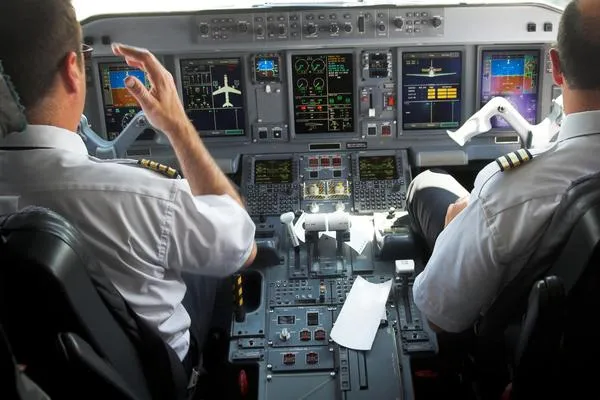
Cybercriminals Are Now Hijacking Airplane GPS Systems with "Smart Spoofing"
Planes are flying blind—and they don’t even know it. In a chilling evolution of cybercrime, hackers are now using a technique called smart spoofing to hijack airplane GPS systems mid-flight. This isn't science fiction—it's happening in real time, with global aviation authorities reporting a staggering rise in GPS spoofing incidents. While jamming disrupts signals, spoofing deceives them, feeding false data to aircraft navigation systems with alarming precision. These cybersecurity threats in aviation are just the beginning. If cybercriminals can manipulate a jet’s digital compass, what does that say about the vulnerabilities in your own systems? As cyberattacks grow smarter and stealthier, every business relying on GPS, cloud platforms, or connected tech should consider this a wake-up call. The skies aren't the only thing under threat—your servers, your data, your operations could be next.
Cybercriminals Are Now Hijacking Airplane GPS Systems with "Smart Spoofing"
What is GPS Spoofing?
GPS spoofing is a growing cybersecurity concern in aviation. It involves broadcasting fake satellite signals that mislead aircraft navigation systems. Unlike jamming, which blocks GPS altogether, spoofing is stealthier—it feeds false data into a system while appearing legitimate.
These attacks can cause serious flight deviations and communication breakdowns without pilots realizing what's happening until it's too late.
➡️ For a deeper look at how public mistakes can go viral and impact safety, see How the Nancy Mace Ulta Video Teaches Us About Cybersecurity.
Real-World Incidents on the Rise
Recent GPS spoofing events have exposed massive vulnerabilities:
Middle East & Eastern Europe: Business and military aircraft report frequent GPS anomalies. One pilot reported a location discrepancy of over 200 miles mid-flight (NBAA).
The Baltic Region: Aircraft flying near Kaliningrad experienced navigation disruptions, likely linked to electronic warfare from Russia (Vanity Fair).
Global Trend: The International Air Transport Association reports GPS spoofing rose 500% in 2024 (Military Aerospace).
➡️ Learn how to prevent human error from worsening these risks in Why Most Cybersecurity Trainings Fail—and How to Make Yours Stick.
The Danger of “Smart Spoofing”
“Smart spoofing” represents a terrifying evolution. These attacks target aircraft computer systems directly, manipulating onboard navigation in real-time. They mimic authentic signal patterns so well that aircraft don't register the data as incorrect—until it's too late.
➡️ As artificial intelligence starts being used by both defenders and hackers, check out How AI Is Making Hackers More Dangerous—and What to Do About It.
How Airlines Are Defending Planes Against GPS Spoofing
Aviation professionals are fighting back with:
Multi-Sensor Navigation: Aircraft can cross-check GPS with inertial navigation systems, visual data, and terrain mapping.
Spoofing Detection Software: Algorithms analyze signal inconsistencies and alert pilots.
Cyber Training for Pilots: Pilot training now includes recognizing spoofing attempts and switching to analog backup systems (NBAA).
Backup Infrastructure: The FCC is researching alternatives to GPS, including eLORAN and other ground-based timing/navigation systems (Reuters).
➡️ Learn how to safeguard your business on a budget in Cybersecurity on a Budget: Smart Protection for Small Businesses.
What's Next?
GPS spoofing isn’t science fiction anymore—it’s a daily reality for aircraft around the world. And as spoofing tactics evolve, aviation cybersecurity needs to move faster.
Cybersecurity isn’t just about compliance—it’s about staying ahead of adversaries who are getting smarter, more precise, and harder to detect.
➡️ Want your organization to stay one step ahead? Check out How to Build a Culture of Cybersecurity in Your Organization.
